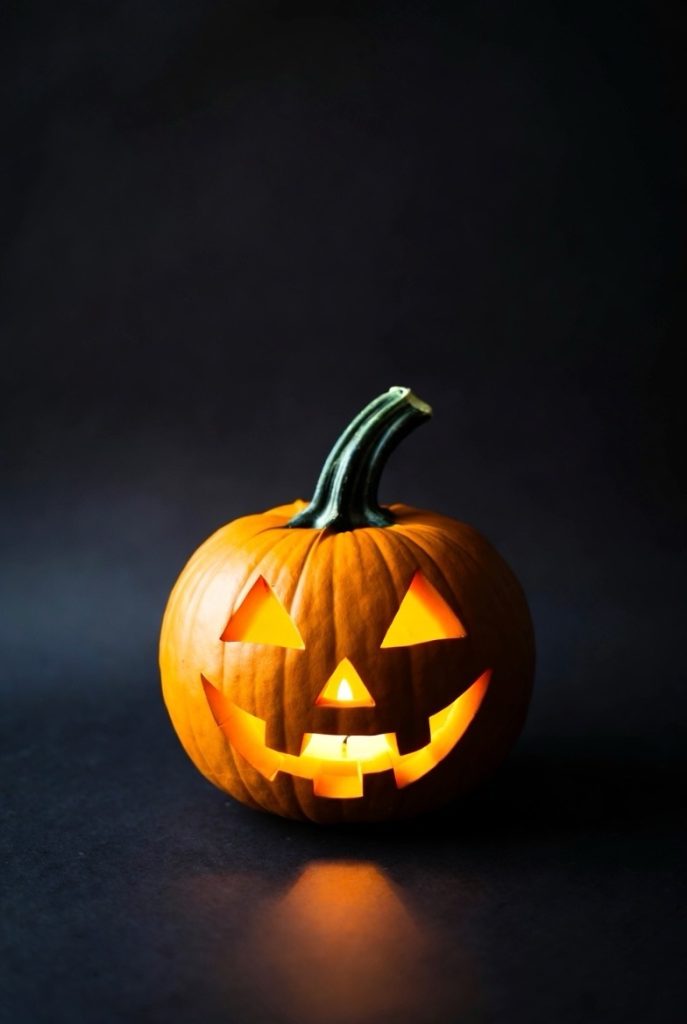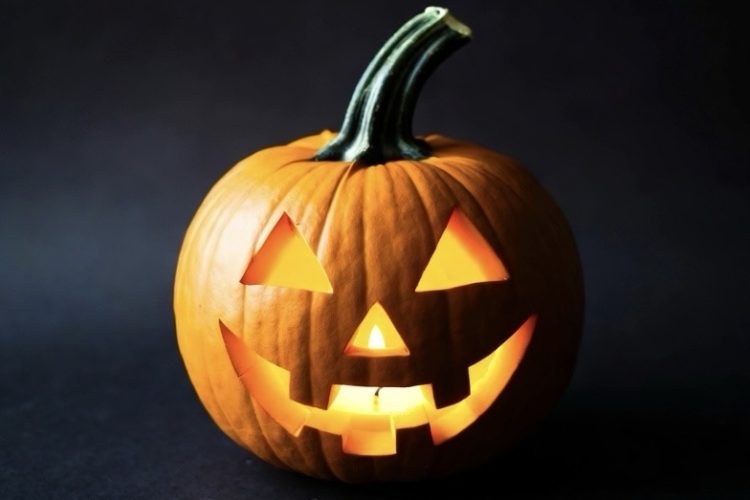Halloween, celebrated on October 31, is All Hallows’ Eve—the night before All Saints’ Day. Rooted in the ancient Celtic festival Samhain, it marked the end of harvest and the start of winter, when spirits were believed to roam. People lit bonfires, wore costumes to ward off ghosts, and left food offerings. Christianized over time, it became a vigil of prayer and fasting. Traditions like trick-or-treating evolved from medieval souling, where the poor exchanged prayers for soul cakes. Jack-o’-lanterns, originally carved turnips, come from the Irish tale of Stingy Jack. Today, kids dress up, go door-to-door for candy, and enjoy haunted houses, parties, and games like apple bobbing. Symbols include pumpkins, witches, skeletons, and black cats. Celebrated globally with local twists—like Mexico’s Day of the Dead or Ireland’s bonfires—Halloween blends fun, fear, and remembrance in a billion-dollar holiday of costumes, candy, and community.
Long Version
Halloween
Halloween, also known as All Hallows’ Eve or All Saints’ Eve, is a celebration observed on October 31, marking the eve of the Western Christian feast of All Saints’ Day. It initiates the triduum of Allhallowtide, a time dedicated to remembering the dead, including saints (hallows), martyrs, and all the faithful departed. The holiday blends ancient pagan roots with Christian traditions, evolving into a secular event characterized by costumes, trick-or-treating, and spooky decorations. Celebrated worldwide with varying customs, Halloween encompasses themes of the supernatural, harvest, and the macabre, drawing from myths, symbols, and festivals that span centuries.
Etymology
The term “Halloween” is a contraction of “All Hallows’ Even” or “All Hallows’ Eve,” where “even” derives from the Old English “efn,” meaning evening. In Scottish dialect, it appears as “Hallowe’en,” reflecting “Hallow-e’en,” the eve before All Hallows’ Day. This nomenclature ties directly to Christian liturgy, designating the vigil preceding All Saints’ Day, also called All-hallowmas. Equivalent phrases in other languages, such as Old English “All Hallows Eve,” underscore its religious origins. Over time, the word has encompassed broader secular connotations, but its core remains linked to the solemn observance of saints and the departed.
History
Origins and Pagan Roots
Halloween’s foundations trace to ancient Celtic harvest festivals, particularly the Gaelic festival of Samhain, pronounced “SAH-win,” which marked the end of the harvest season and the onset of winter on October 31 to November 1. In Celtic mythology, Samhain was a liminal period when the boundary between this world and the Otherworld thinned, allowing the Aos Sí—spirits or fairies—to cross over. To appease these supernatural beings and ensure livestock and people survived the harsh winter, communities lit bonfires for protection and left offerings of food. People disguised themselves in animal skins or other guises to ward off malevolent entities, a practice that foreshadowed modern costumes.
Influences from Roman festivals, such as Feralia—a day to honor the dead—and the harvest goddess Pomona, may have intermingled as the Roman Empire expanded into Celtic territories. Feralia involved grave offerings and commemorative meals, while Pomona’s association with fruits like apples could explain traditions like apple bobbing. However, the primary pagan roots lie in Celtic neopaganism and Wiccan interpretations, where Samhain is viewed as a new year festival involving divination and communion with ancestors.
Christianization and Medieval Customs
With the spread of Christianity, pagan festivals were often Christianized. In the 7th century, Pope Boniface IV dedicated the Pantheon in Rome to St. Mary and all martyrs on May 13, establishing an early form of All Saints’ Day. By the 8th century, Pope Gregory III shifted it to November 1, possibly to supplant Samhain in Celtic regions, though evidence suggests the date aligned with practical concerns like pilgrim accommodations and health issues in Rome. This made October 31 All Hallows’ Eve, a vigil of abstinence, fasting, and prayer.
Allhallowtide expanded to include All Souls’ Day on November 2, focusing on souls in Purgatory. Medieval customs like souling emerged, where the poor, often children, went door-to-door offering prayers for the dead in exchange for soul cakes—small pastries marked with a cross. This practice, documented from the 15th century in England, Wales, Flanders, Bavaria, and Austria, is a direct precursor to trick-or-treating. Soulers carried lanterns made from hollowed turnips, symbolizing souls and evolving into jack-o’-lanterns to repel evil.
Mumming and guising involved costumed performers reciting verses or plays for food, impersonating saints or spirits. In Ireland and Scotland, cross-dressing and masked pranks were common, with threats of mischief if denied treats. Church art depicted the danse macabre, a skeletal dance reminding viewers of mortality (memento mori and vanitas themes), influencing costume parties and pageants. Bonfires, or tindle fires, were lit to guide souls or ward off witches, as in Lancashire’s teen’lay or Derbyshire customs.
The Reformation altered observances; Protestants rejected Purgatory, redefining ghosts as evil spirits and suppressing bell-ringing for souls. Yet, in Catholic areas like Ireland, traditions persisted, including soul lights—candles guiding the dead home—and food left for spirits, as in Brittany or Salerno.
Spread to North America and Modern Evolution
Irish and Scottish immigrants in the 19th century brought Halloween to North America, where it merged with Native American harvest rites and Puritan influences. Initially limited, it gained traction post-immigration waves, with guising recorded in Canada by 1911 and “trick or treat” first printed in 1927. By the 1930s, it became a community event to curb pranks like Mischief Night.
Commercialization accelerated in the 20th century, with pre-made costumes, candy, and decorations. Trunk-or-treating emerged as a safer alternative in parking lots. Global spread occurred via American media, influencing celebrations in non-Western countries by the late 20th century.
Symbols
Halloween symbols evoke the supernatural and autumn harvest. The jack-o’-lantern, carved from pumpkins (or originally turnips or mangel wurzels), stems from the Irish legend of Stingy Jack, a soul wandering with a coal-lit turnip after tricking the Devil. It wards off evil while illuminating paths.
Ghosts, witches, black cats, and skeletons represent the macabre, drawing from Gothic literature like Frankenstein and Dracula, and films such as Night of the Living Dead. Colors like orange (harvest), black (death), and purple (mystery) dominate. Skulls symbolize Golgotha and memento mori, while corn husks, scarecrows, and bats add harvest and nocturnal themes.
Traditions and Activities
Trick-or-Treating and Guising
Trick-or-treating involves children in costumes collecting candy door-to-door, with “trick” implying pranks if denied. Rooted in souling and guising, it parallels medieval mumming where masked groups performed for rewards. In Scotland and Ireland, guisers with turnip lanterns recited verses; in the Philippines, Pangangaluluwa sees children singing for sweets while dressed as souls.
Trunk-or-treating offers treats from car trunks in safe venues. UNICEF’s program, started in 1950, has raised millions through donation boxes.
Costumes and Makeup
Costumes range from horror figures like vampires, zombies, and witches to pop culture icons, celebrities, or animals. Originating from disguises to evade spirits or honor saints, they include cross-dressing in Welsh gwrachod or Scottish traditions. Makeup and accessories enhance themes, with pet costumes (e.g., pumpkin or hot dog) popular, costing millions annually. Ethnic stereotypes face scrutiny.
Games and Divination
Games like apple bobbing (or dooking) involve retrieving floating apples with teeth, linked to Pomona and divination for marriage. Nuts roasted by fires predict matches; mirrors or oomancy (egg divination) and scrying reveal futures. In Ireland, púicíní uses saucers with symbols like rings (marriage) or clay (death). Barmbrack hides charms foretelling fortunes. Pranks occur on Mischief Night.
Food
Abstinence from meat on All Hallows’ Eve led to vegetarian fare like colcannon (potatoes and cabbage) or soul cakes. Candy apples (toffee apples) and caramel apples are staples, though tampering myths reduced homemade treats. Barmbrack, treacle scones, and themed candies prevail. In Spain, “bones of the holy” pastries honor the dead.
Haunted Attractions and Parties
Haunted houses, hayrides, and corn mazes provide scares, originating from 1915 fun houses. Evangelical hell houses evangelize via afterlife depictions. Parties feature games, horror films, and parades like New York’s Village Halloween Parade. Festivals include bonfires and fireworks, though injuries occur.
Geography of Celebrations
Halloween varies regionally. In Ireland (Oíche Shamhna), bonfires, guising, and colcannon dominate; Scotland adds fireworks and Hop-tu-Naa on the Isle of Man. Wales observes Calan Gaeaf with similar rites; England’s Guy Fawkes Night overlaps. In the US and Canada, trick-or-treating and haunted attractions are central, with trunk-or-treating in rural areas.
Mexico’s Day of the Dead (Día de los Muertos) blends with Halloween, featuring altars and barriletes gigantes in Guatemala. China’s Teng Chieh lights lanterns; Japan’s Kawasaki Parade emphasizes costumes. In the Philippines, Pangangaluluwa mimics souling; Italy’s Ognissanti includes grave visits. Australia’s parades grow despite spring timing; New Zealand proposes it as a holiday. In Poland, forest prayers and cemetery candles create “seas of light”; Spain has processions and soul cakes.
Religious Perspectives
Christian views on Halloween range from embrace to avoidance. Catholics see it as a vigil for All Saints’ Day, with fasting, prayers, and Night of Light services focusing on Christ. Protestants may celebrate Reformation Day (October 31, marking Luther’s theses) or host Hallelujah Night with Bible-themed activities and Scripture Candy. Evangelicals use hell houses or gospel tracts for outreach, viewing costumes as mocking evil.
Some Christians decry pagan roots, associating it with occultism, though historians note its Christian origins predominate over fabricated Samhain links. Orthodox Christians vary in observance; Jews often abstain per Halakha, comparing to Purim or Yizkor. Muslims may deem it haram. Neopagans and Wiccans reclaim Samhain as a harvest rite, rejecting commercial aspects.
Modern Observances and Cultural Impact
Today, Halloween is a multibillion-dollar industry with parties, films, and pranks. Safety concerns include poisoned candy myths (largely unfounded) and firework injuries. Analogous festivals like Pitru Paksha in Hinduism or Black Halloween variants highlight global adaptations.
In education, Catholic schools may host saint parades; communities organize light parties. Despite controversies, Halloween remains a vibrant blend of ancient myths and contemporary fun, offering insights into cultural fears, remembrance, and celebration.







